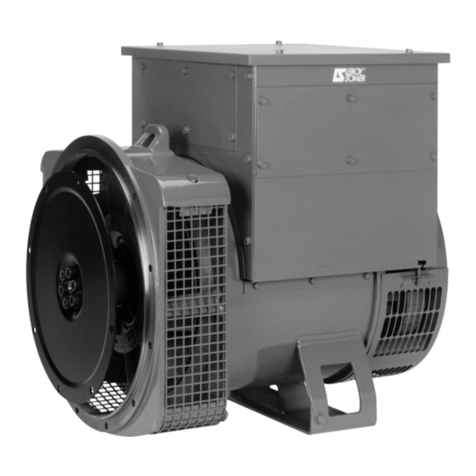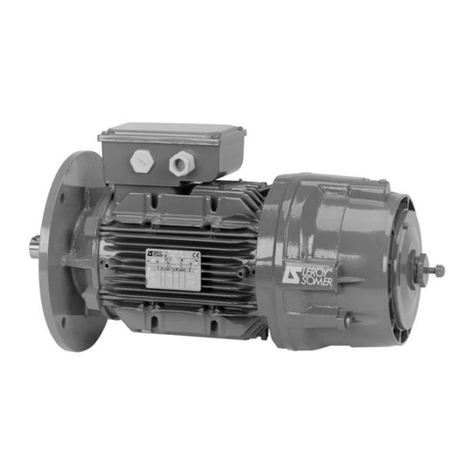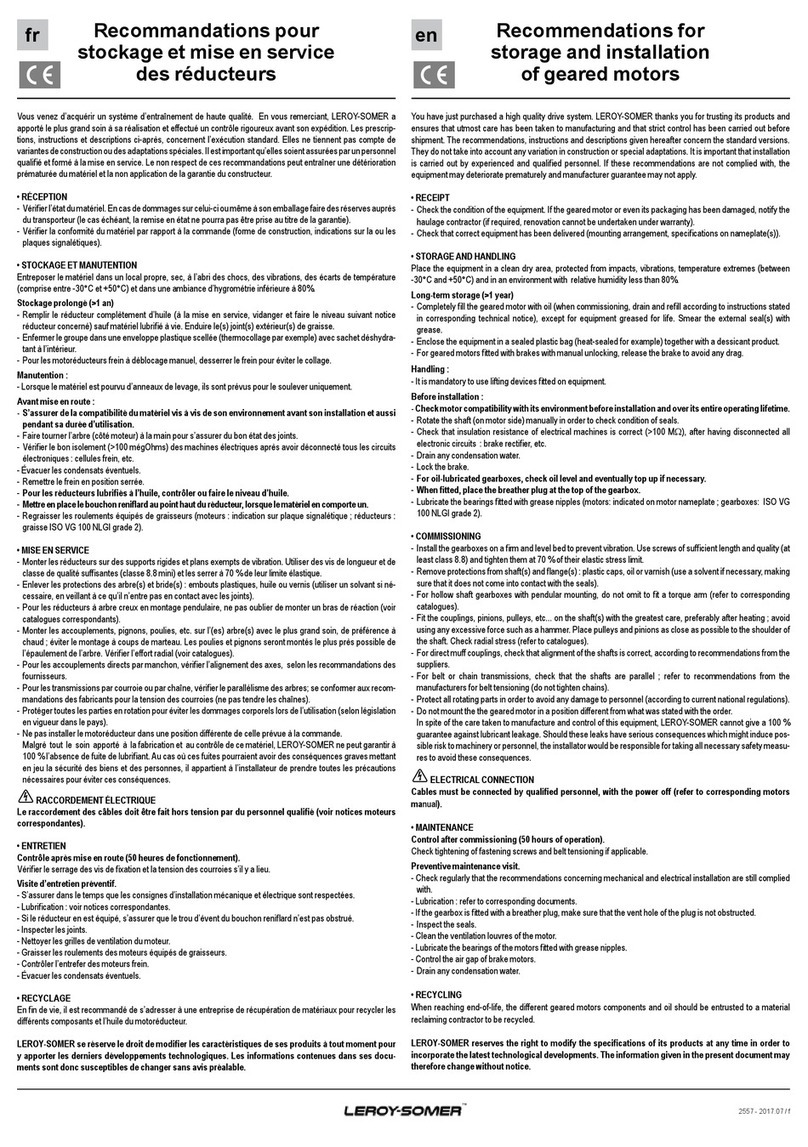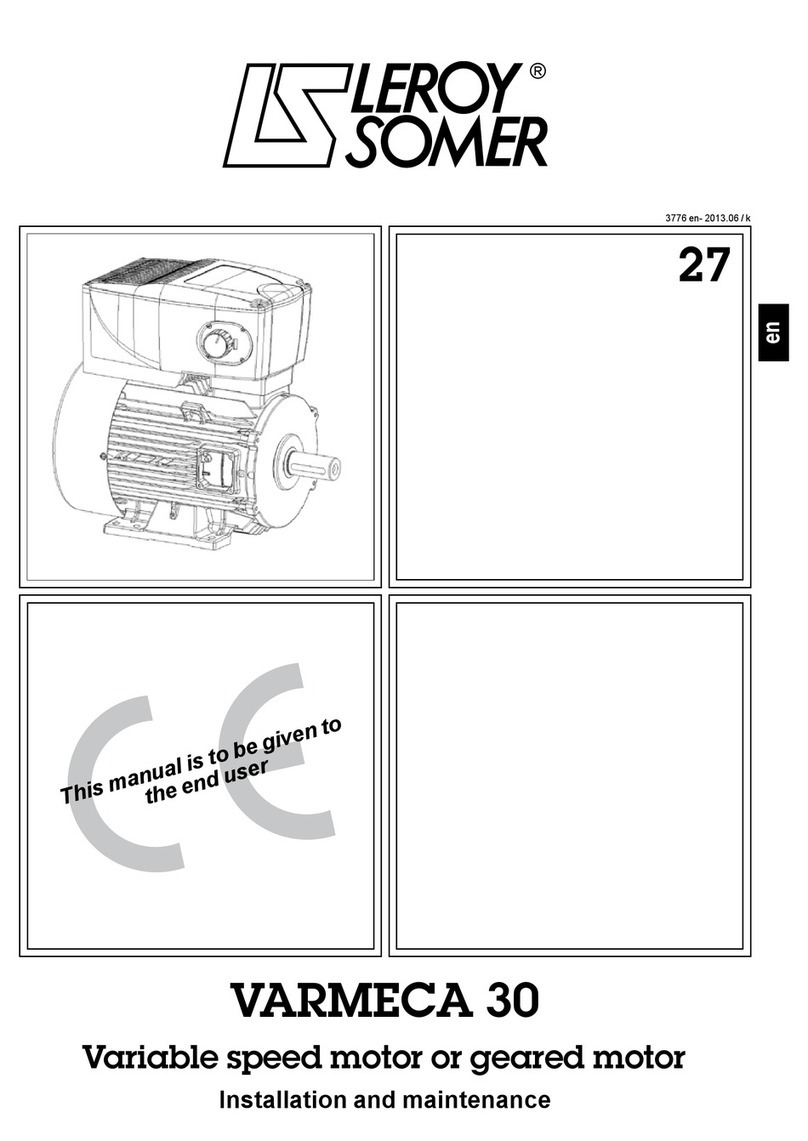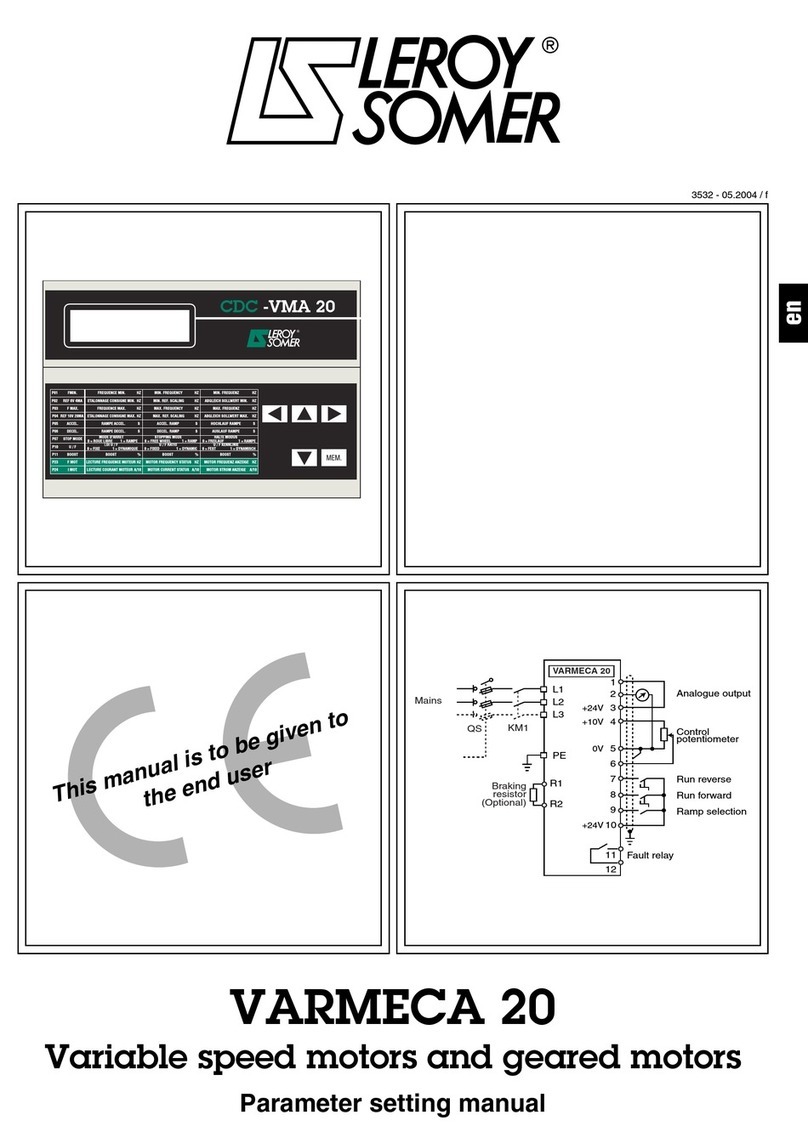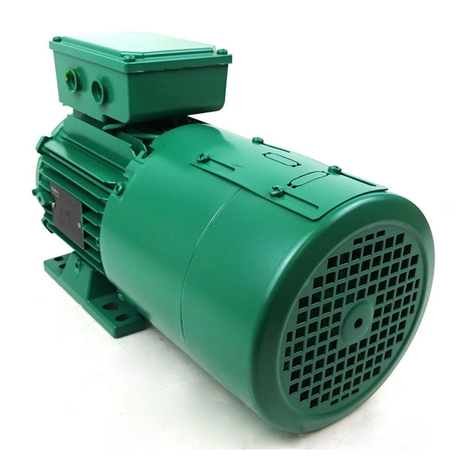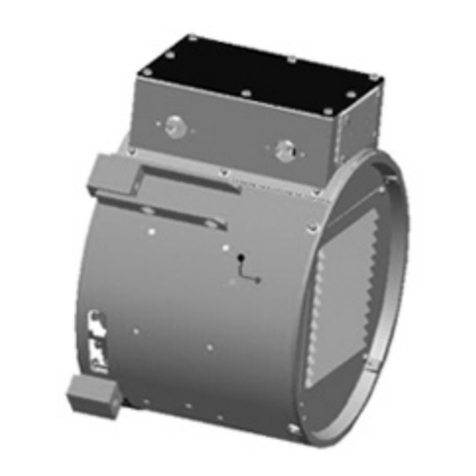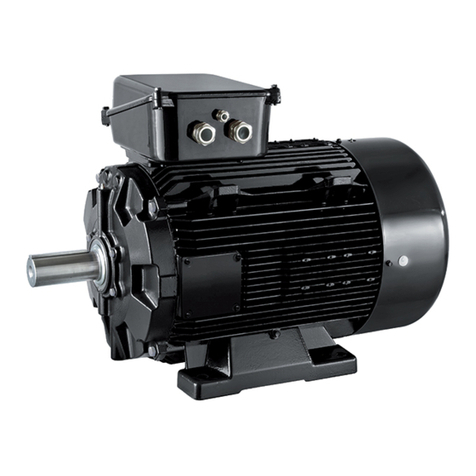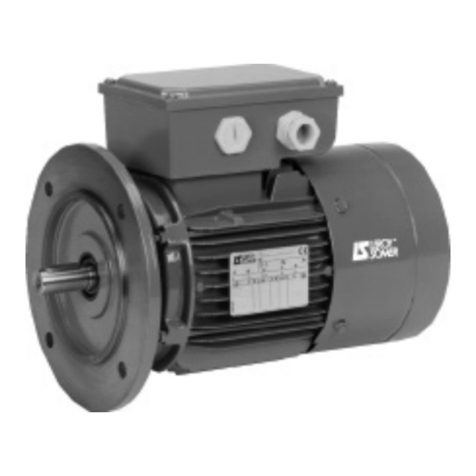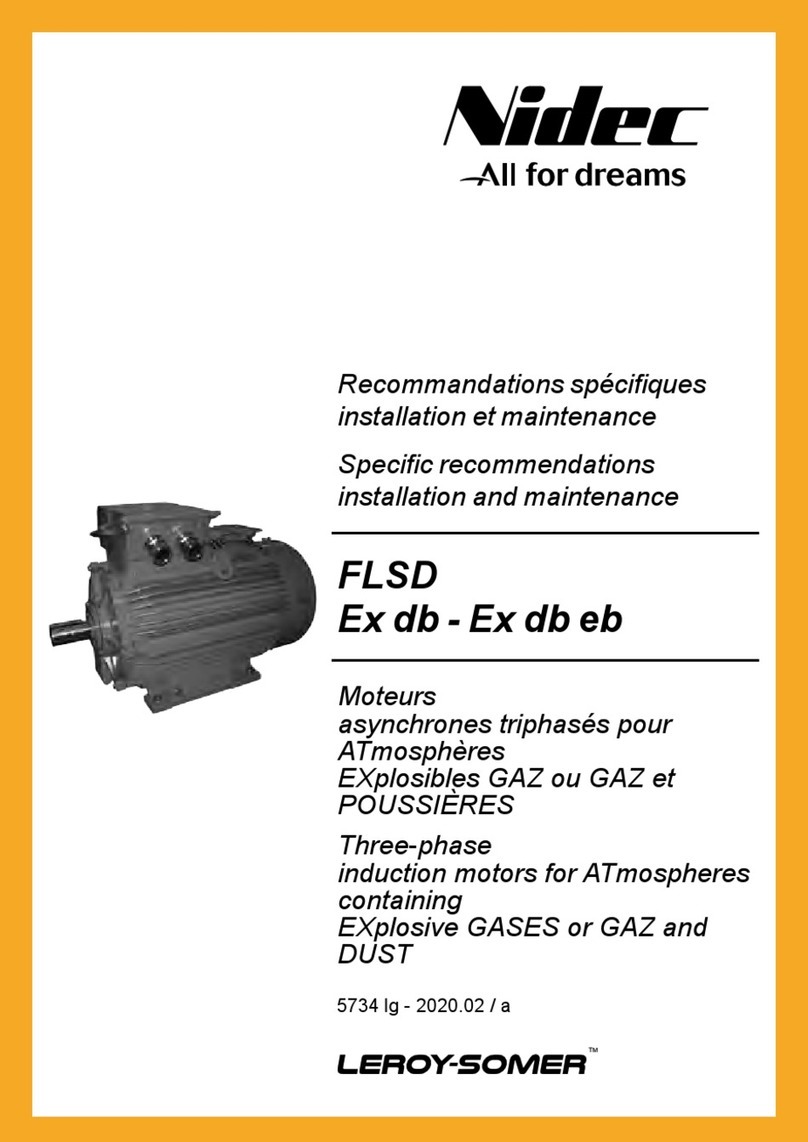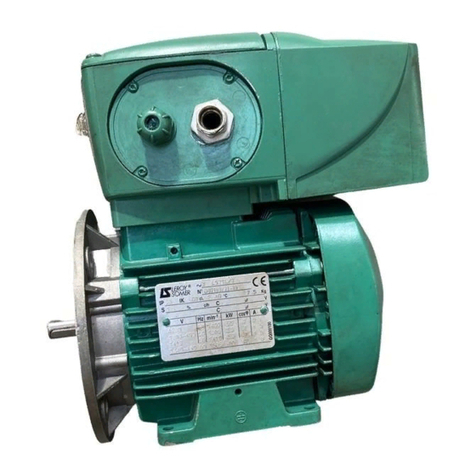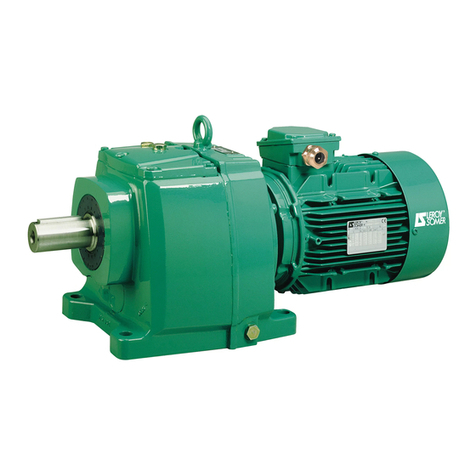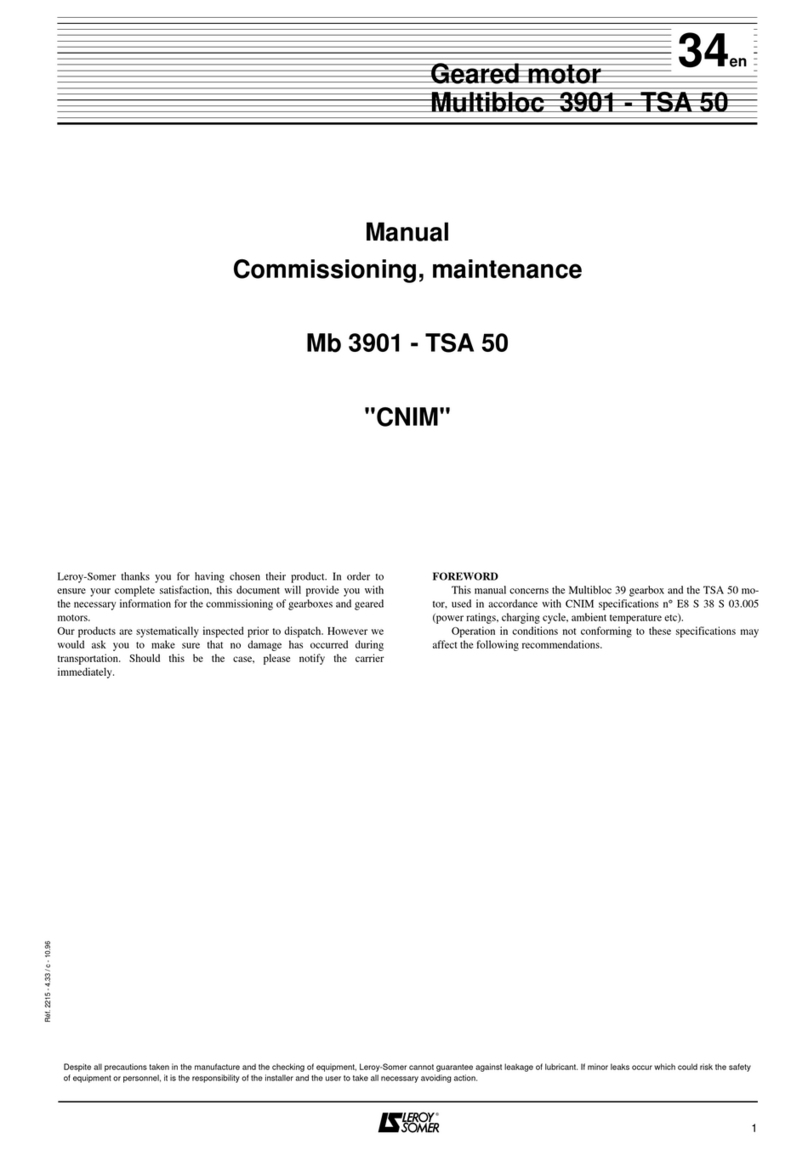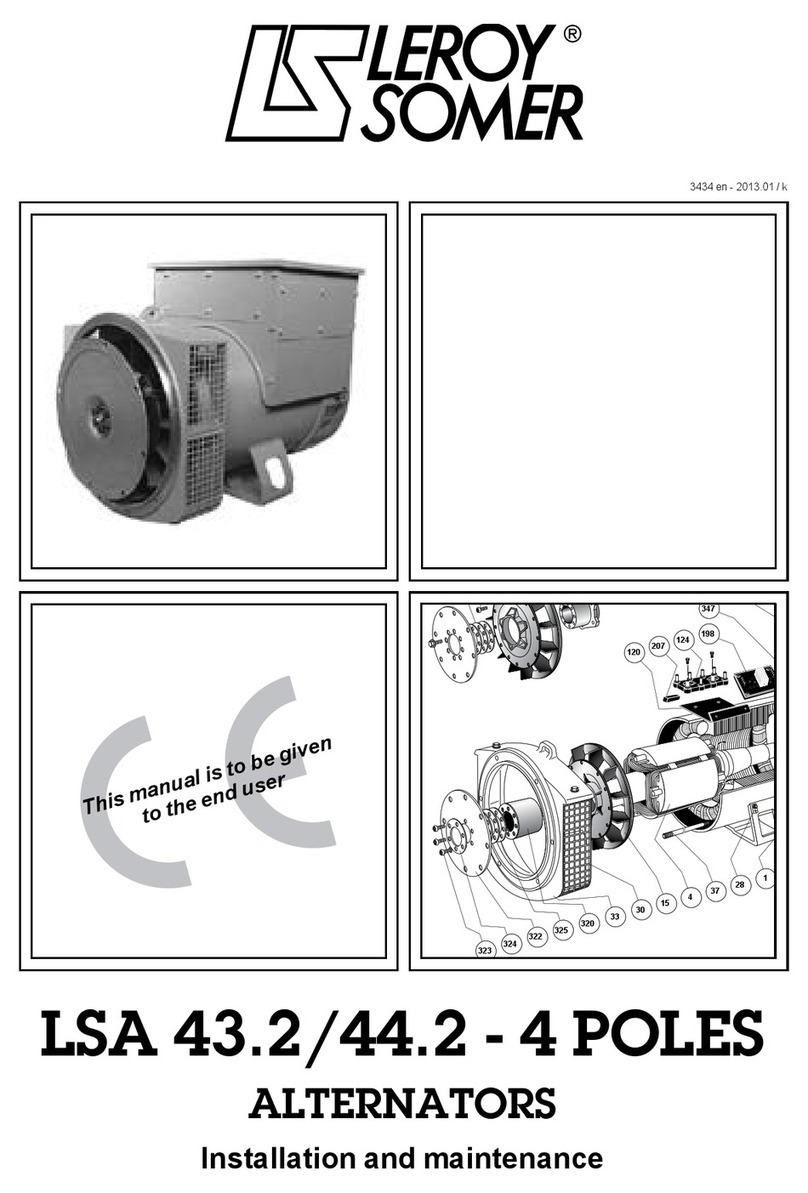
LEROY-SOMER
6
2012.03 / d
INSTALLATION AND MAINTENANCE
LSE - FLSE
T
hree-phase induction motors for atmospheres containing explosive gases and dust
3614 en -
2 - STORAGE
Prior to commissioning, machines should be stored:
- Away from humidity: at relative humidity levels above 90%,
the machine insulation can drop very rapidly, to just above zero
at around 100%. The state of the anti-rust protection on
unpainted parts should be monitored.
For very long storage periods the motor can be placed in a
sealed enclosure (for example heat-shrunk plastic) containing
sachets of desiccant:
- Away from frequent signicant variations in temperature, to
avoid the risk of condensation. During storage the drain plugs
must be removed to allow condensation water to escape.
- If the area is subject to vibration, try to reduce the effect of this
vibration by placing the motor on a damping support (rubber
plate or similar) and turn the rotor a fraction of a turn once a
fortnight to prevent the bearing rings from becoming marked.
Remove and replace the rotor locking device if applicable.
- Do not remove the rotor locking device (where there are roller
bearings).
Even if the motor has been stored in the correct conditions,
certain checks must be carried out before it is started up:
Greasing
The motors must be stored in their original packaging, in a
location away from humidity (RH<90%) and vibrations.
- Motors tted with permanently greased bearings: maximum
storage period = 3 years; after this time, replace the bearings
with an identical type.
- Motors tted with grease nipples:
Storage period
Grade
2 grease
Grade
3 grease
< 6 months < 1 year No regreasing before commissioning.
6 months
to 1 year
1 to 2
years
Regrease before commissioning in accordance with
the instructions appearing on the nameplate
(quantity and quality of grease).
1 to 5
years
2 to 5
years
Dismantle and clean the bearings. Completely
replace the grease in accordance with the
instructions appearing on the nameplate (quantity
and quality of grease). Replace the seals on the
shaftways and for IP 66 motors on the spigots before
commissioning.
> 5 years > 5 years Change the bearings. Completely replace the
grease in accordance with the instructions appearing
on the nameplate (quantity and quality of grease).
Replace the seals on the shaftways (lubricate them
using the same grease as that on the bearings) and
for IP 66 motors on the spigots before
commissioning.
3 - COMMISSIONING
This check is essential if the motor has been stored for longer
than 6 months or if it has been kept in a damp atmosphere.
This measurement must be carried out using a megohmmeter
at 500 V D.C. (do not use a magnetoelectric system).
It is better to carry out an initial test at 30 or 50 volts and if the
insulation is greater than 1 megohm, carry out a second test
at 500 volts for 60 seconds. The insulation value must be at
least 10 megohms in cold state.
If this value cannot be achieved, or if the motor may have been
splashed with water or salt spray, or kept for a long period in a
very humid place or if it is covered with condensation, it is
advisable to dry the stator for 24 hours in a drying oven at a
temperature of between 110°C and 120°C.
If it is not possible to place the motor in a drying oven:
- Switch on the motor, with the rotor locked, at 3-phase A.C.
voltage reduced to approximately 10% of the rated voltage, for
12 hours (use an induction regulator or a reduction transformer
with adjustable outlets).
- Or supply the 3 phases in series with a D.C. current, with the
voltage at 1 to 2% of the rated voltage (use a D.C. generator
with independent excitation or batteries for motors of less than
22 kW).
- NB: The A.C. current must be monitored using a clamp
ammeter, and the D.C. current using a shunt ammeter. This
current must not exceed 60% of the rated current.
It is advisable to place a thermometer on the motor housing: if
the temperature exceeds 70°C, reduce the indicated voltage
or current by 5% of the original value for every 10°C difference.
While it is drying, all the motor orices must be open (terminal
box, drain holes). Before commissioning, all these covers must
be replaced so that the motor conforms to IP 55 or 65 degree
of protection. Clean or replace the orices and plugs or
breathers before reassembly.
Before starting the motor, it is advisable to
check the insulation between the phases and
earth, and between phases.
Warning: If the high voltage test, carried out at
the factory before despatch, needs to be
repeated, it should be performed at half the
standard voltage, ie: 1/2 (2 U + 1000 V). Check that the
capacitive effect resulting from the high voltage test
is eliminated before connecting the terminals to earth.
Prior to commissioning for all motors:
- Remove all dust from the machine
- Rotate the motor with no load (no mechanical
load) for 2 to 5 minutes, checking that there is no
abnormal noise. If there is any abnormal noise, see
section 10.
Warning: Do not perform a high voltage test on
the auxiliaries.
Should the machine need to be repainted, the
coating must not be more than 2 mm thick and 0.2 mm
thick for equipment in group IIC. If not, it must be
antistatic.


